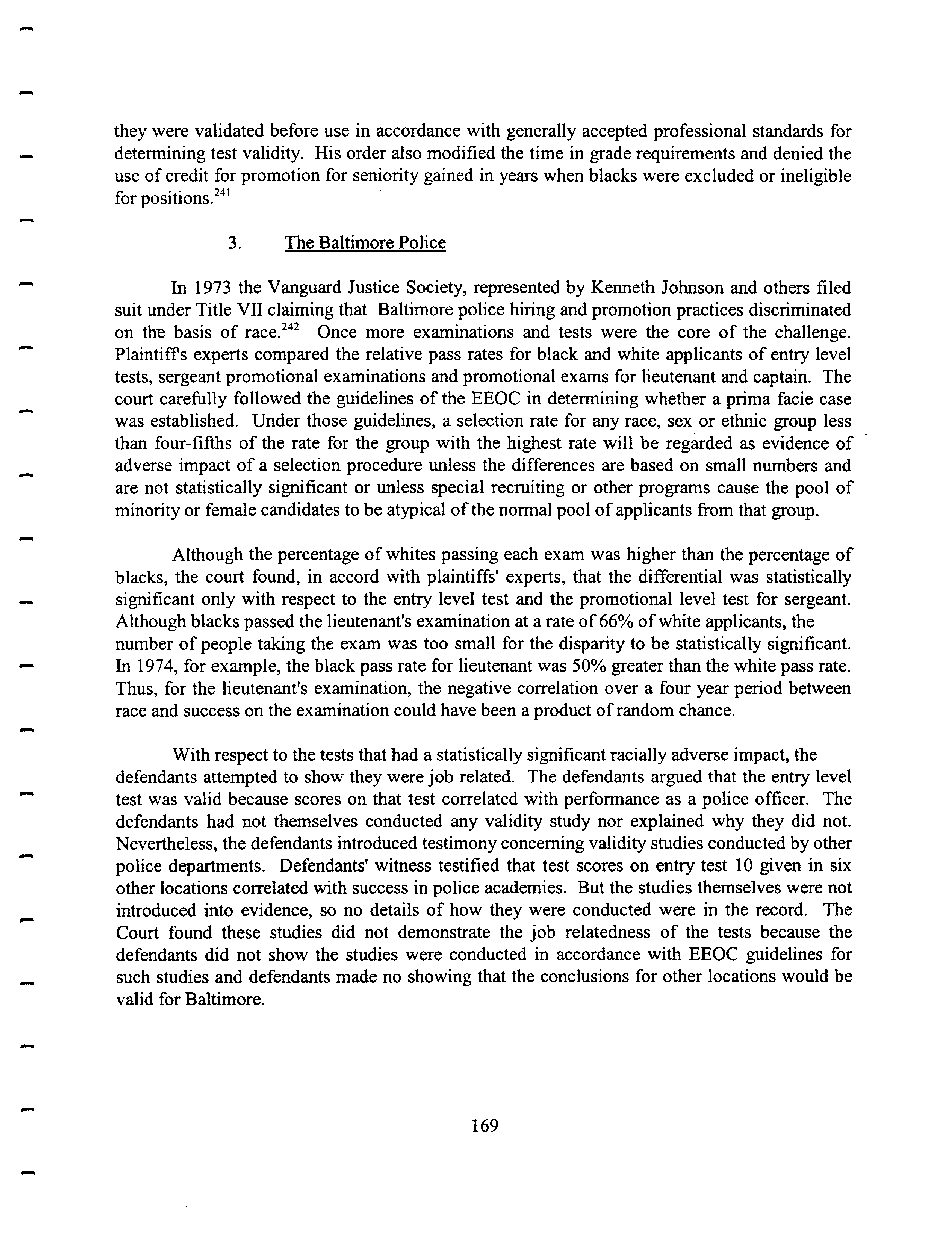|
they were validated before use in accordance with generally accepted professional standards for
determining test validity. His order also modified the time in grade requirements and denied the
use of credit for promotion for seniority gained in years when blacks were excluded or ineligible
for positions.241
3. The Baltimore Police
In 1973 the Vanguard Justice Society, represented by Kenneth Johnson and others filed
suit under Title VJJ claiming that Baltimore police hiring and promotion practices discriminated
on the basis of race.242 Once more examinations and tests were the core of the challenge.
Plaintiffs experts compared the relative pass rates for black and white applicants of entry level
tests, sergeant promotional examinations and promotional exams for lieutenant and captain. The
court carefully followed the guidelines of the EEOC in determining whether a prima facie case
was established. Under those guidelines, a selection rate for any race, sex or ethnic group less
than four-fifths of the rate for the group with the highest rate will be regarded as evidence of
adverse impact of a selection procedure unless the differences are based on small numbers and
are not statistically significant or unless special recruiting or other programs cause the pool of
minority or female candidates to be atypical of the normal pool of applicants from that group.
Although the percentage of whites passing each exam was higher than the percentage of
blacks, the court found, in accord with plaintiffs' experts, that the differential was statistically
significant only with respect to the entry level test and the promotional level test for sergeant.
Although blacks passed the lieutenant's examination at a rate of 66% of white applicants, the
number of people taking the exam was too small for the disparity to be statistically significant.
In 1974, for example, the black pass rate for lieutenant was 50% greater than the white pass rate.
Thus, for the lieutenant's examination, the negative correlation over a four year period between
race and success on the examination could have been a product of random chance.
With respect to the tests that had a statistically significant racially adverse impact, the
defendants attempted to show they were job related. The defendants argued that the entry level
test was valid because scores on that test correlated with performance as a police officer. The
defendants had not themselves conducted any validity study nor explained why they did not.
Nevertheless, the defendants introduced testimony concerning validity studies conducted by other
police departments. Defendants' witness testified that test scores on entry test 10 given in six
other locations correlated with success in police academies. But the studies themselves were not
introduced into evidence, so no details of how they were conducted were in the record. The
Court found these studies did not demonstrate the job relatedness of the tests because the
defendants did not show the studies were conducted in accordance with EEOC guidelines for
such studies and defendants made no showing that the conclusions for other locations would be
valid for Baltimore.
169
�
|

